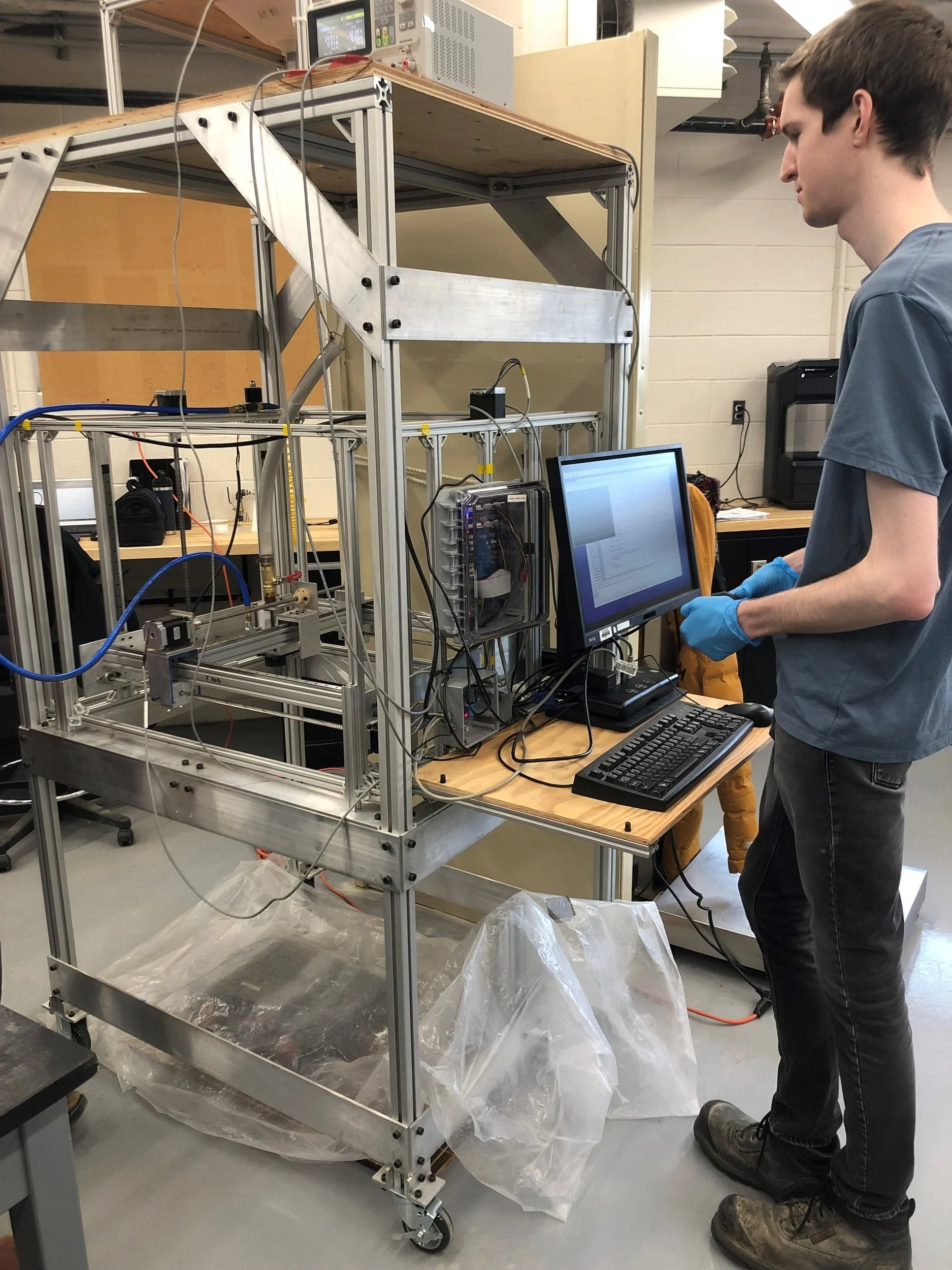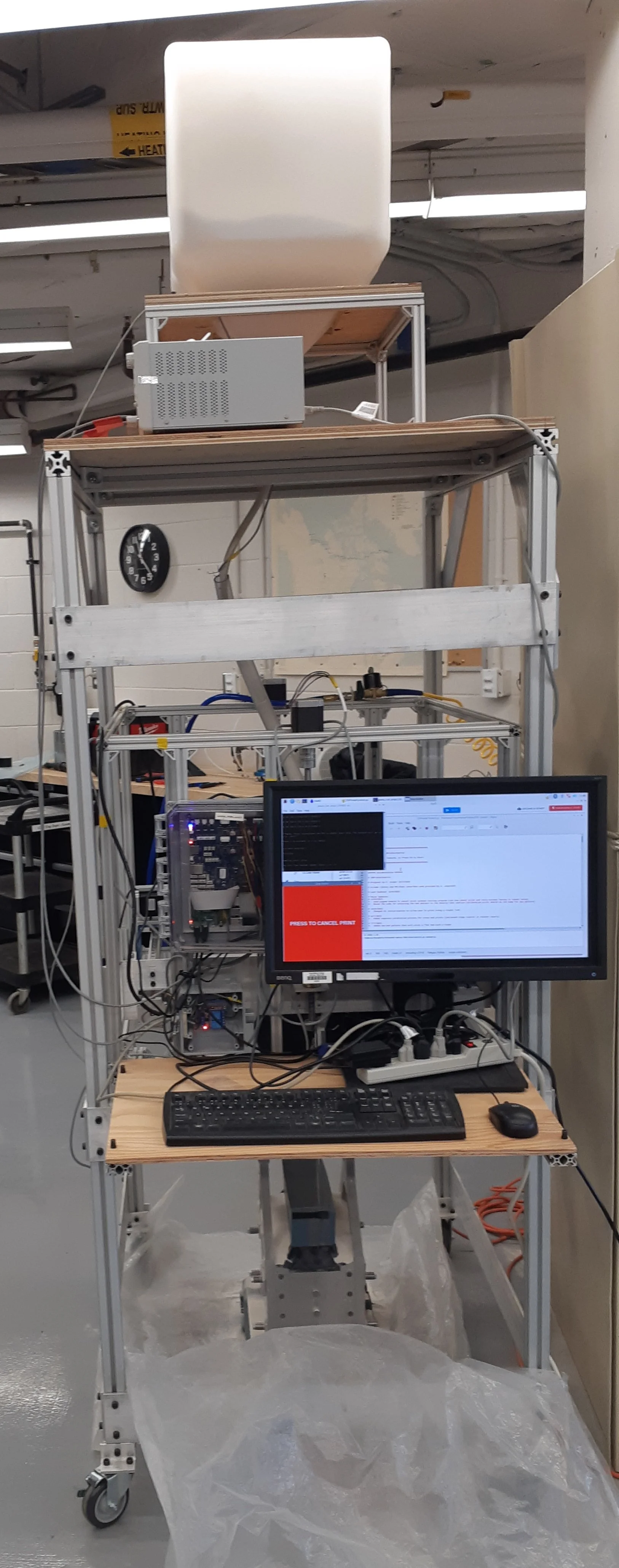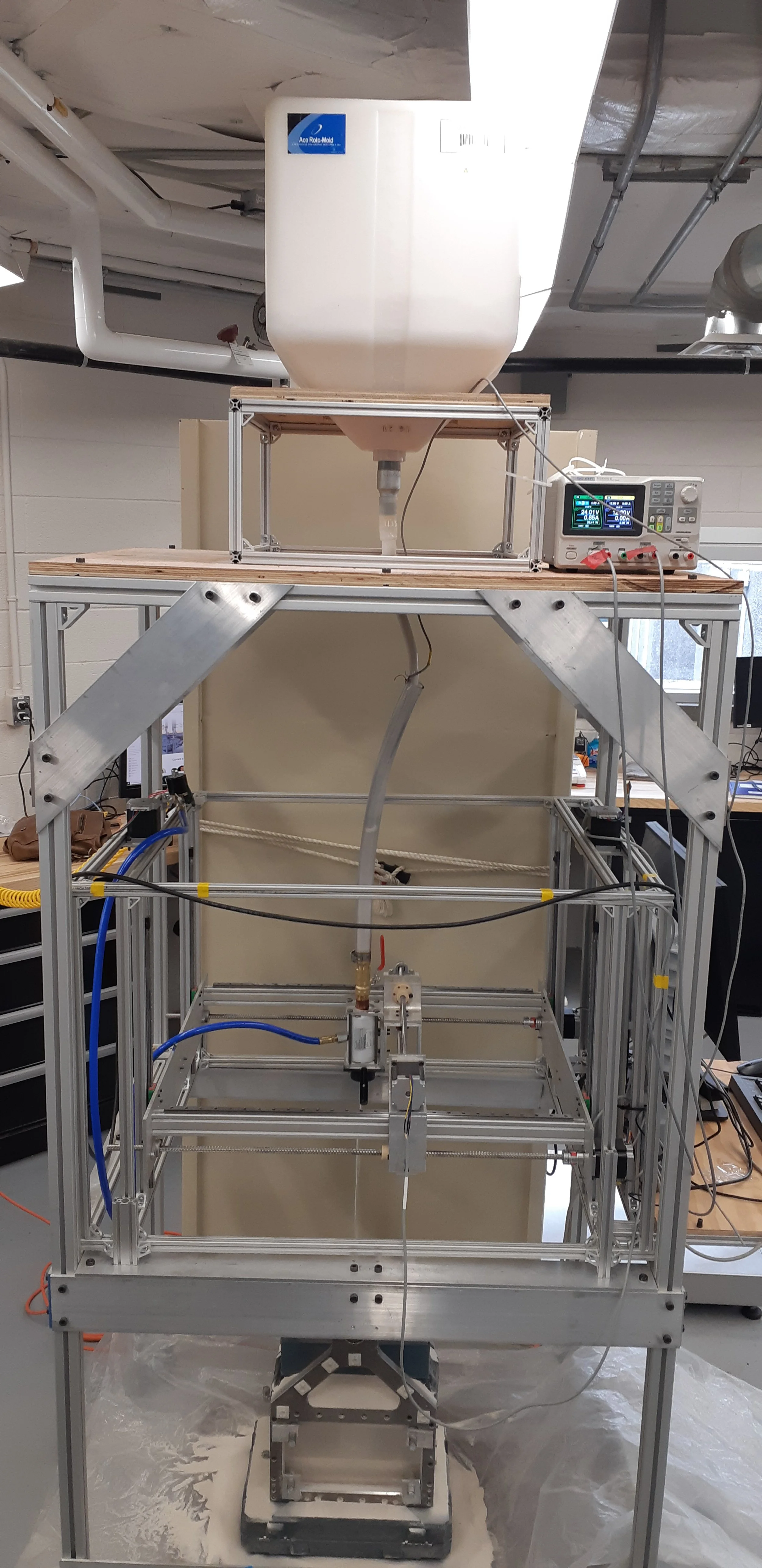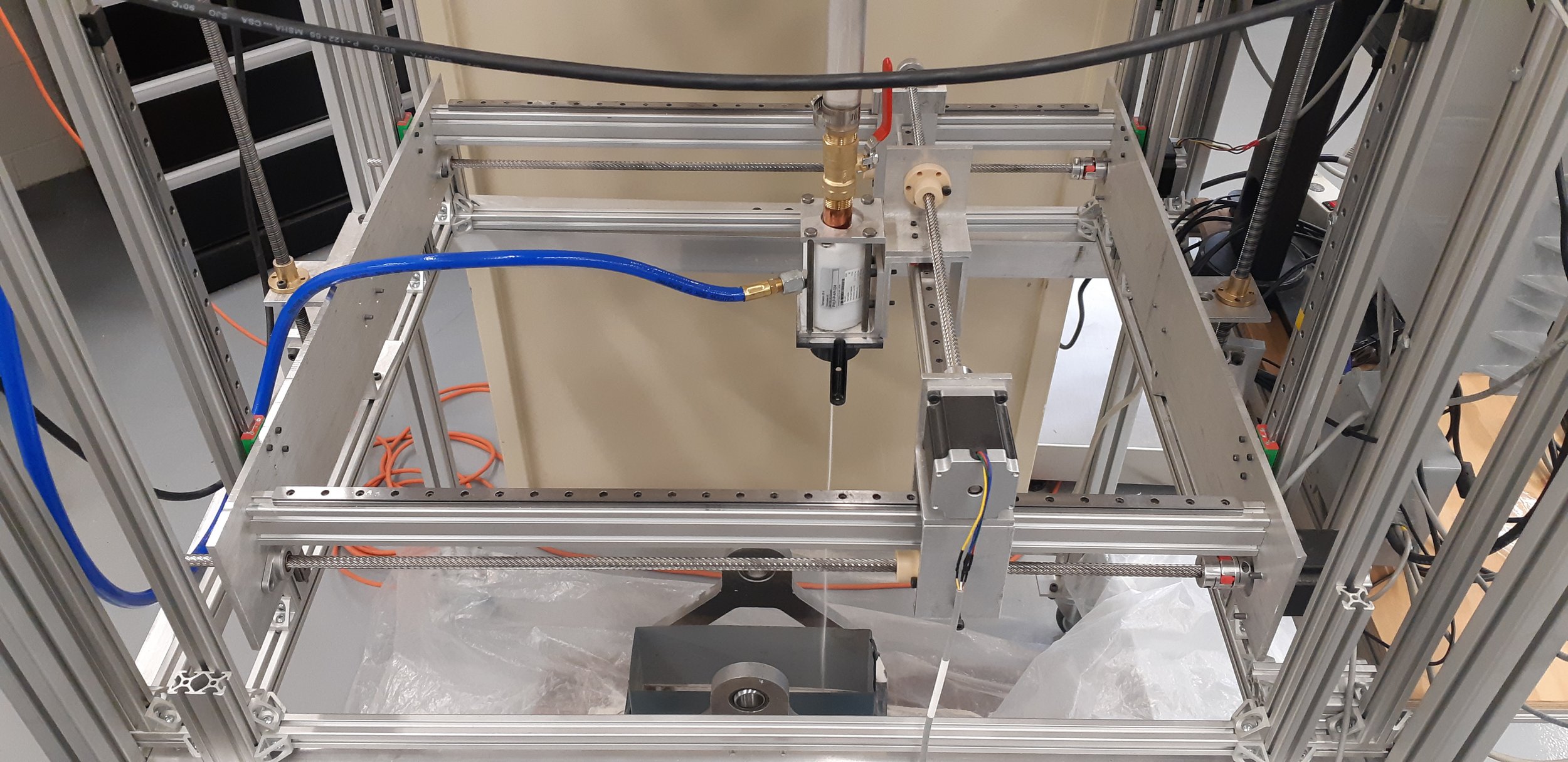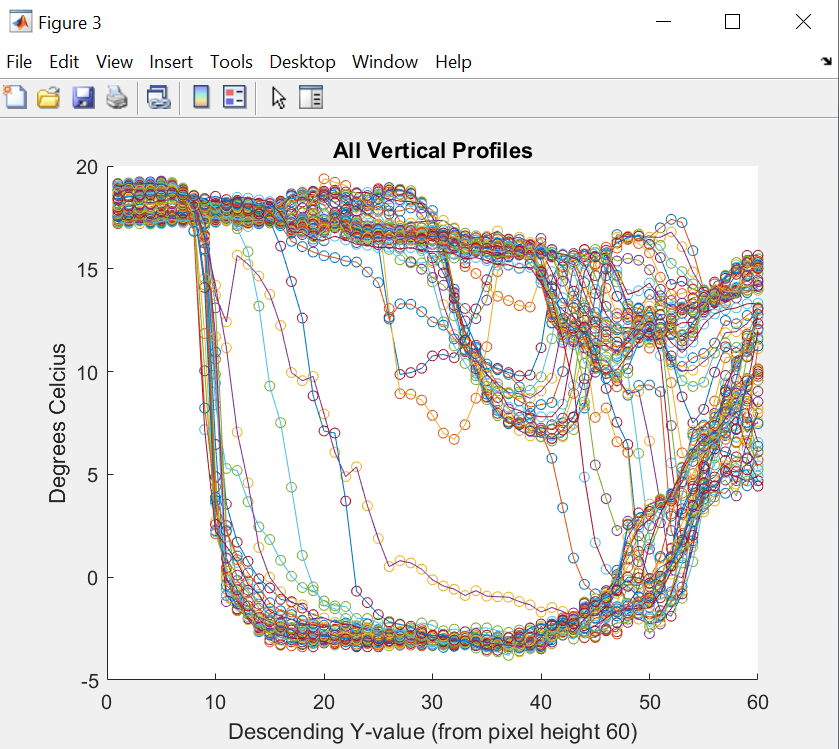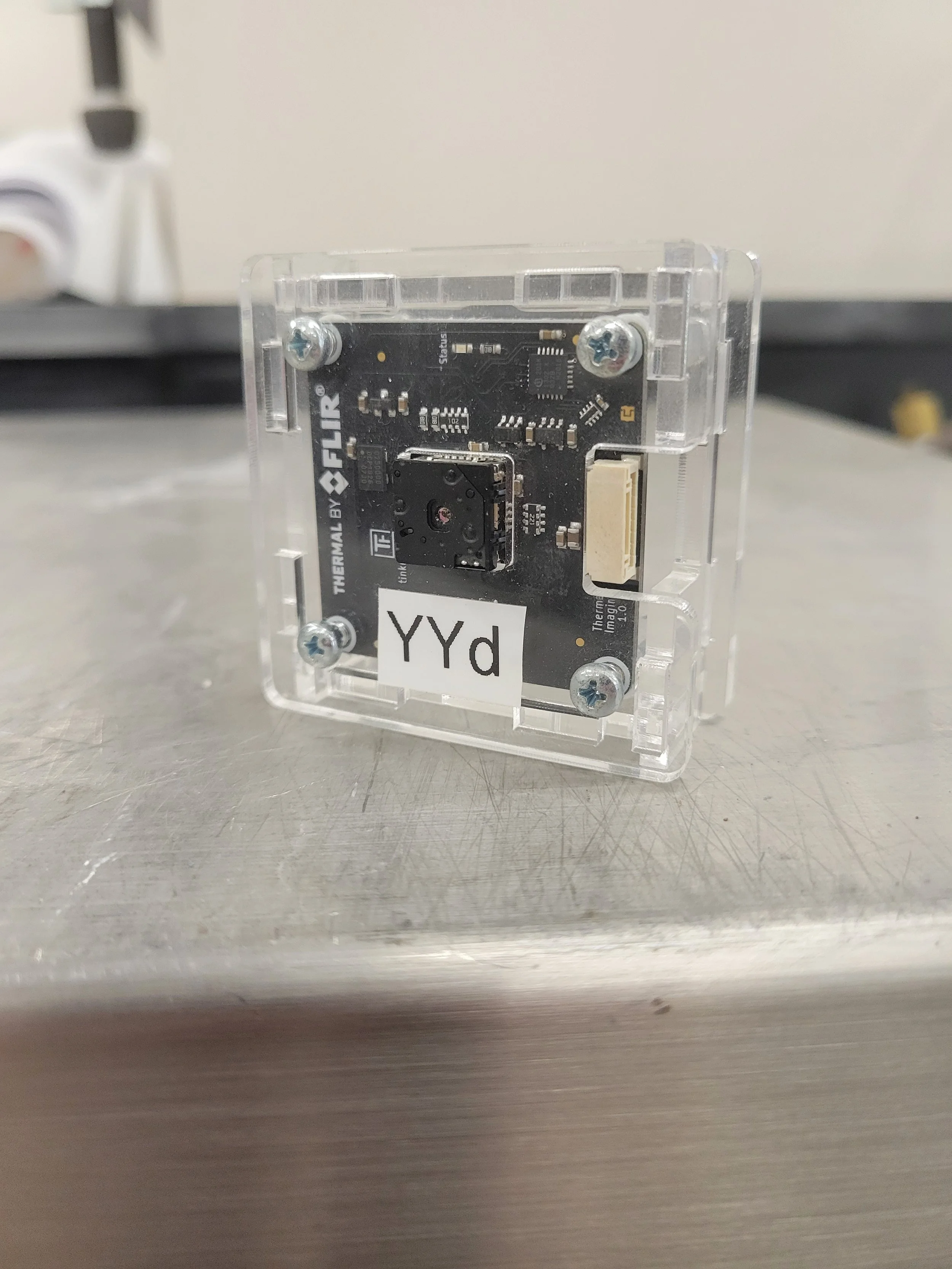3D Soil Printer
The 3D soil printer at RMC works similarly to a Fused Deposition Modeling (FDM) printer. There is a print head which deposits material onto a surface and moves via motor-operated gantry. Three axes of motion are possible, with 2 stepper motors powering movement along the Y and Z axes, and 1 motor powering movement along the X axis. These motors are controlled using a python code that runs on a Raspberry Pi. Sand is poured through a 3D printed nozzle that can be modified to incorporate different flowrates. The printer helps create models that mimic real soil structures, which can then be tested in standard laboratory experiment or in the centrifuge. Automating this pouring process reduces human error, which in turn will lead to more accurate result.
Infrared Thermal Camera
Through the use of a commercially available FLIR infrared camera by German company Tinkerforge, the RMC cold regions lab has been able to more deeply investigate the thermal profile of various soil types in a varying range of temperature conditions and transitionary states. The small scale of the camera paired with its compatibility with a Raspberry Pi allows for unique opportunities when conducting experiments to record surface temperatures of soil samples in locations such as chest freezers or RMC’s centrifuge.
The functionality of the camera can be further customized through the use of opensource plugins available in a vast number of programming languages provided by Tinkerforge. Using both python and Matlab, both a user interface and image analysis have been developed respectively.
Centrifuge
Equipped with an internal computer, raspberry pi, and many other interchangeable tools, the RMC centrifuge has played an integral role in the lab. Supplementing proof-of-concept experiments, building upon them to a larger, more realistic scale of stresses, the centrifuge puts to question our most intriguing experiments. Possessing also the incredibly useful ability of coalescing multiple tools and apparatus found within our lab into a single experiment, experiments can be designed to have multiple avenues of data collection, across varying parameters. Tools that have found strong use in the centrifuge have included the aforementioned thermal camera, linear actuator (see bottom right image), and LUNA fibre optic sensors. These comprehensive tests then yield new and interesting insights into the behaviour and properties of various soil types in a cold region environment.

